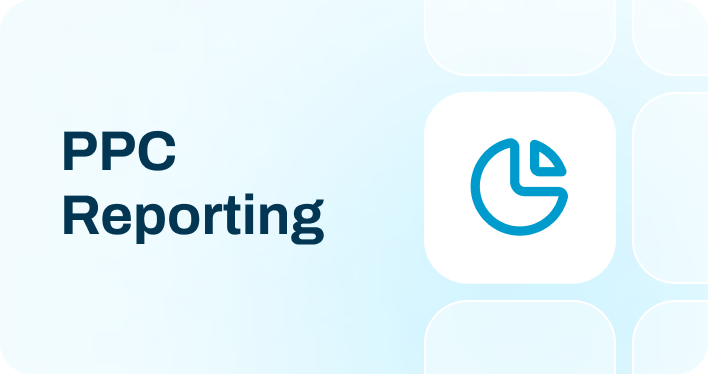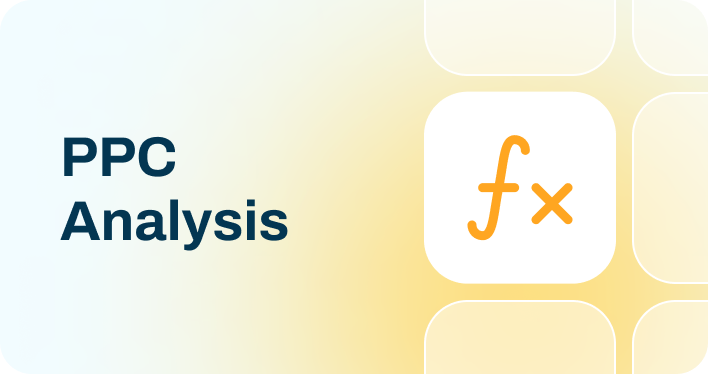What is a CPC?
Cost per click (CPC) measures the cost of each click on your ads. This metric directly impacts the budget and efficiency of online advertising campaigns. Understanding CPC allows marketers to assess how much they pay for each site visitor. As a result, they can optimize budget allocation and adjust strategy. A lower CPC means you're getting more traffic for less money. So, your campaign's ROI goes up.
How to calculate CPC?
To calculate cost per click (CPC), divide the total cost of your advertising campaign by the number of clicks the ad received.


Our key templates to track CPC
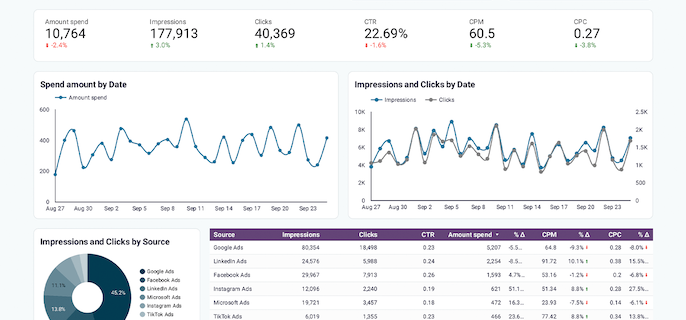
Get a comprehensive PPC reporting tool to track the performance of your campaigns launched at multiple advertising platforms.









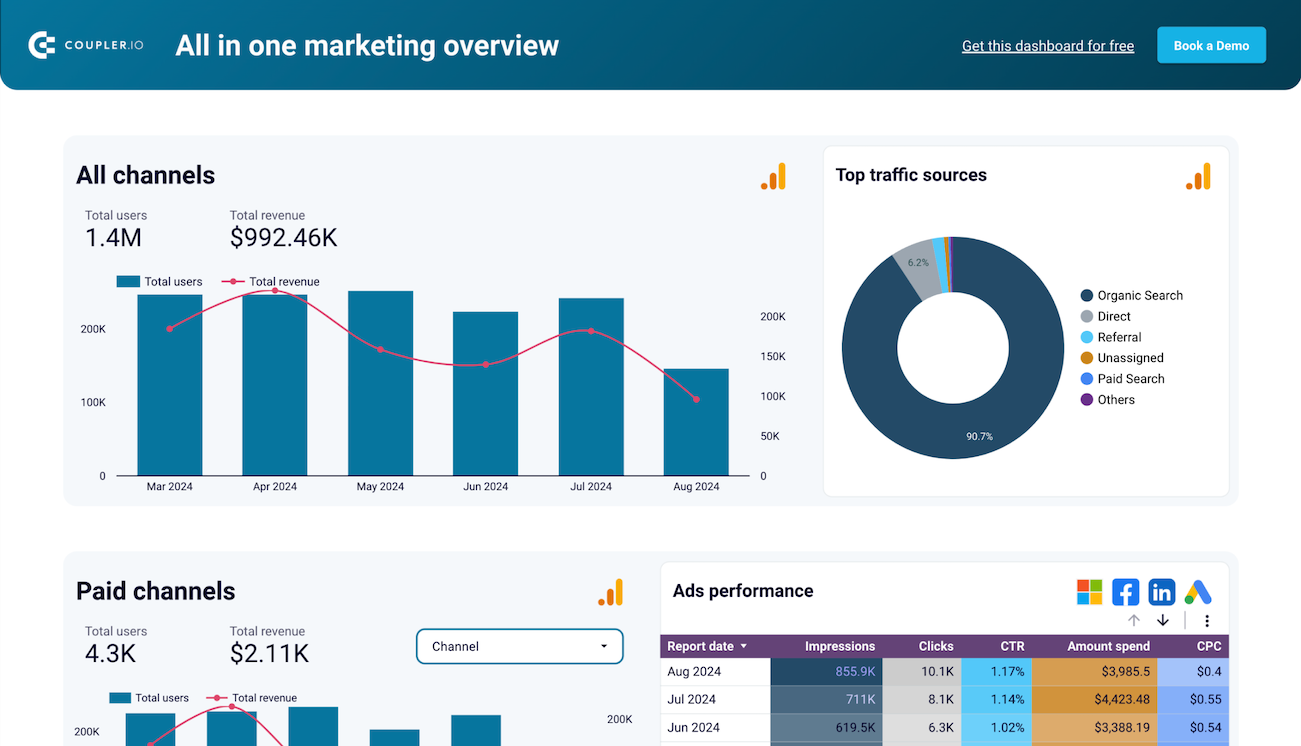
Monitor all your marketing channels with an all-in-one dashboard providing performance overviews of web analytics, ad campaigns, SEO, social media, and emails.













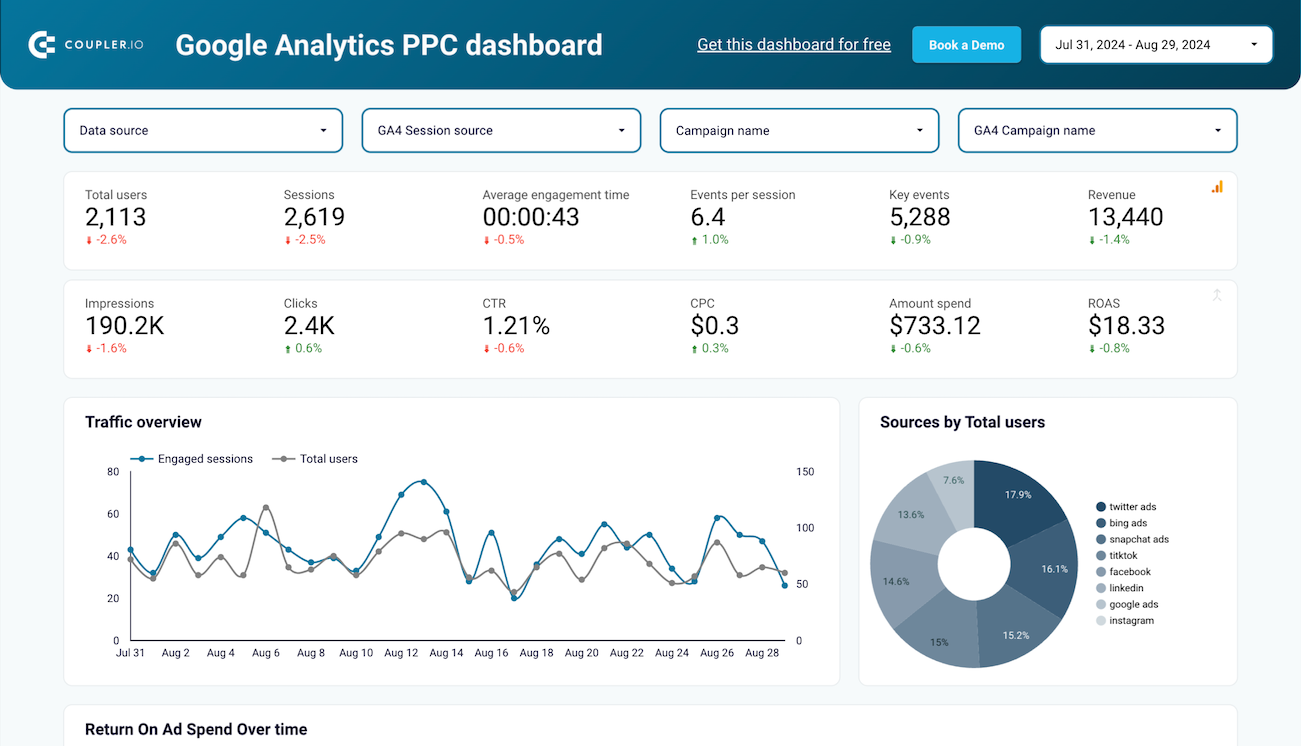
Get an overview of the traffic performance of your advertising campaigns launched across different PPC platforms.










How to improve CPC?




